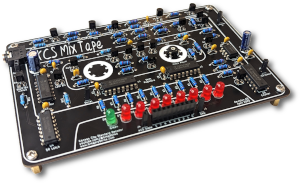Fermentation is the heart of crafting any home brew whether it’s wine, beer or even root beer. Fermentation is the step where the yeast gets to be in the spotlight and turns all the brewers work into something … well, more exciting!
Yeast is responsible for creating the alcohol and the carbonation (CO2). It does this by eating sugars in the brew which are in there from the malts. When yeast eats the sugars the byproduct is CO2 and alcohol. Both of which make for an excellent brew.
In the video I point out the bubbling snake shaped thing on the top of my carboy. This is an airlock. At this point in the beer crafting process the yeast is still producing CO2 and alcohol but we are really only interested in creating the alcohol right now. We do not want to carbonate the beer at this point. The airlock’s purpose is to let out the CO2 created by the yeast without letting any of the unsanitary air in. If the carboy was simply plugged the beer would carbonate and there’s also a chance that the carboy could explode… which would make for a cool story but nasty beer.
The length of time the fermentation takes depends on a couple things. One thing being the amount of sugar in the batch. But basically once the bubbling in the airlock stops, it’s done. The yeast has run out of sugars to eat. In some easier brews this takes about a week.
Another variable that affects the length of time is the temperature. Usually the target temperature is around 70°F/21°C, but this depends on the type of beer you are making. Also, if the temperature is too cold the yeast will become inactive and wont eat the sugar, warming it back up to the target temperature can fix this. However, if it’s too hot you can kill the yeast.
Once the fermentation is complete it’s then onto the bottling stage. Before we put the beer in the bottles we need to add a little more sugar to the now alcohol infused brew, this gives the yeast just what it needs in order to carbonate the beer. We then put the beer in the bottles, seal them up and the carbonation will happen in the bottles which will usually take a week or two.
I hope that this explains some of the process a little better. I think it’s pretty cool to start from scratch and finish a brew and then be able to share that with family and friends. If you haven’t yet please feel free to watch the video above and drop me a line if this has helped you understand it a little better.

